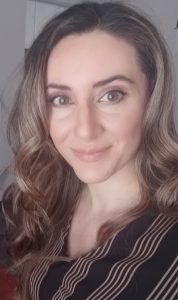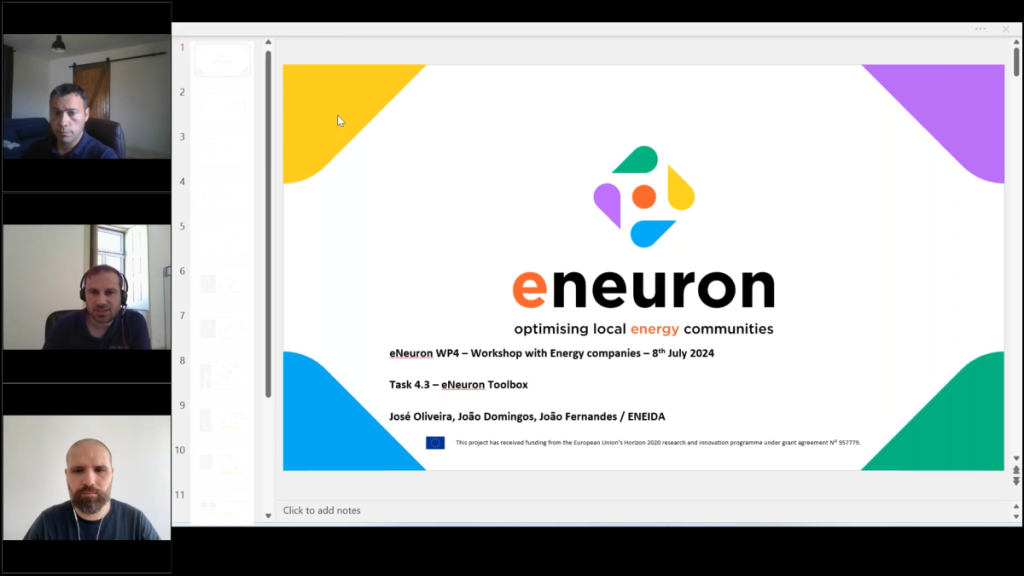Perspectives from the two project coordinators
eNeuron coordinators – Marialaura Di Somma from ENEA and Christina Papadimitriou from FOSS give a short interview to share thoughts on local energy communities and on how eNeuron will help to build a sustainable model for their design and use.
What is your team’s role in eNeuron and what expertise are you bringing to the project? How do you work together? Marialaura Di Somma

As a project team, we have a whole range of skills for developing and validating the tools needed for optimising local energy communities. Our experts come from 7 research organisations, 3 universities, 3 industries, 1 SME, 1 non-profit organisation, 1 municipality and the Portuguese Navy – now that covers many fields and disciplines! Some of our partners are tech savvy. Others love to play with algorithms, which is great for modelling multi-carrier energy systems. Then we have those who help us navigate the meanders of energy policy and regulations.
It’s teamwork with a broad skillset.
The aim is to build a solid case for the rollout of local energy communities that are efficient, sustainable and replicable.
Another strength is that most partners have already worked together on European projects or via business activities or in research.
They have their own stake in the project but eNeuron has been put together in a way that this works for, not against, our overall project goals.
This complementarity bears out at eNeuron’s four pilot sites: they offer a diverse “playground” in terms of features, types of energy carrier, emerging technologies and functionalities for prosumers, LECs and grid operators. Plus these pilots are set in different countries, which will allow us to evaluate the social impact of our solutions in various areas of Europe.
With so many moving parts and dynamics, can LECs really be optimised? How for example? Christina Papadimitriou

You’re right. LECs are dynamically changing ecosystems, which makes them challenging to design and operate in an optimal way. On top of that, we need to keep in mind that optimization can mean different things to the different players involved. There’s a lot of push and pull. For example, consumers want lower energy bills for the same level of comfort. Grid operators, however, seek to minimize their energy costs while meeting certain technical constraints.
Therefore our aim is to untangle all these knotty challenges with new tools and services that really work against an ever-shifting backdrop.
So let’s look at LEC structure optimisation. For this we need to consider the investment plan and expansion plan.
Firstly, we identify how an energy system can be structured as an optimal LEC (architecture-wise). For this, we look at different types of input data such as carrier selection, technology selection, CAPEX, OPEX and existing infrastructure. This allows us to plan operations and investment for the long term.
Secondly, we draw up the expansion plan while considering various parameters such as optimal topology, size, optimal investments from the ecosystem perspective, technology and quantities.
Now turning to operation optimisation and as I’ve already mentioned, the big challenge is to “keep everyone happy” – that means meeting the system’s technical constraints while upholding the free will of the peers within the community. It’s a juggling game and we’re developing the apparatus needed for that.
To ensure peers can all have their say, we’re applying a new approach. We rank optimisation by cutting it into two layers: a central/LEC one, and a distribution/peers one. Each complements and interacts with the other through different mechanisms such as demand-response (DR). By forming two layers of optimisation, we can find the best fit and respect all the stakeholders for the short and long terms.
Which aspects of your work in eNeuron are the most pioneering? Marialaura Di Somma
Tools for optimising the architecture and operation of LECs already exist. But most either cover one or the other aspect – not both. Daily operation optimisation on its own assumes the energy system configuration is predetermined, meaning there’s no way to optimise the architecture as a whole by integrating new carriers and related technology.
Another crucial aspect is that most of today’s LEC optimisation tools take things from an economic point of view. However, economic analysis alone is insufficient due to growing environmental concerns and policy objectives.
So this is where we come in as a project. We’re pioneering a more holistic approach to multi-carrier energy systems – one that plugs these gaps by dealing with both long-term design optimisation and short-term operation optimization. Our aim is to optimise LEC architecture with new tech configurations while ensuring economic and environmental sustainability. The latter will be achieved by identifying trade-offs between these priorities and the correlations between the benefits and impacts of local DER integration.
eNeuron has four pilot sites – a sports stadium, a naval base, a university campus and a city district. Do they have common challenges? Can they learn from one another? Christina Papadimitriou
The pilots in eNeuron are indeed different – there’s not much in common between a naval base and a residential district for example! But they are also complementary and will allow us to roll out and validate our toolset from end to end in diverse settings. There will, of course, be some cross-cutting challenges reflected in the metrics we’ll monitor: drop in CO2 emissions, greater share of renewables, better air quality, energy savings, drop in costs and greater flexibility.
This on-the-ground testing in diverse contexts will provide valuable data and experience. We will slice and dice all this during eNeuron and turn it into actionable knowledge for strengthening the role LECs play on the journey towards a decarbonised future.
Published on
05 Oct 2021



